November
2017
November 7, 2017
NASAA News and Current Information
25 for 25—Double Your Impact on State Arts Agencies
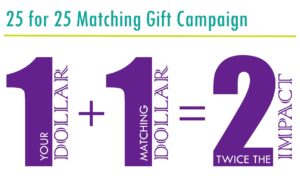 Your gift this season will go twice as far with NASAA’s 25 for 25 matching campaign. The Windgate Foundation has awarded NASAA a $25,000 matching grant, and to receive it we need to raise $25,000 by December 31. This $50,000 for NASAA means even more great products and services for state arts agencies in 2018! Don’t miss this exciting chance to have your generosity matched dollar for dollar. Watch for postal mail and e-mail in the coming weeks, or give on-line today. Thank you!
Your gift this season will go twice as far with NASAA’s 25 for 25 matching campaign. The Windgate Foundation has awarded NASAA a $25,000 matching grant, and to receive it we need to raise $25,000 by December 31. This $50,000 for NASAA means even more great products and services for state arts agencies in 2018! Don’t miss this exciting chance to have your generosity matched dollar for dollar. Watch for postal mail and e-mail in the coming weeks, or give on-line today. Thank you!
Second Lady Focuses on Art Therapy
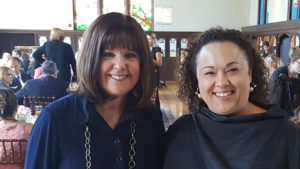
Second Lady Karen Pence (left) and NASAA President and CEO Pam Breaux met last month on the campus of Florida State University in Tallahassee, home to a nationally acclaimed art therapy graduate education program, where Mrs. Pence announced her goals for Art Therapy: Healing with the HeART.
In October, Second Lady Karen Pence launched Her Initiative, Art Therapy: Healing with the HeART. Her goals for this initiative are (1) to elevate the art therapy profession so that people understand that it is a mental health profession, and not arts and crafts; (2) to help people understand that art therapy is an option for various conditions, illnesses and life experiences; and (3) to encourage young people to go into the profession. “It is evident when I visit art therapy programs across the United States and world, that art therapy is making a positive difference. From children with cancer, to struggling teens, to grieving families, to people with autism, to military service members experiencing post-traumatic stress disorder, to those with eating disorders, art therapy is changing lives.”
The Socioemotional Benefits of the Arts
The arts are part of a well-rounded education, and new research from WolfBrown and John Hopkins’ Science of Learning Institute lends credibility to idea that arts education early in life can help with socioemotional skills. The study examines the impact of arts education programs on socioemotional development in areas such as tolerance for others’ perspectives and cultural awareness and asks if the arts can foster perseverance, school engagement and self-efficacy. Study participants were William Penn Foundation’s Philadelphia based arts education grantees along with randomized control groups when possible. The study helps set up a framework for future research but also presents findings that arts education’s influence on socioemotional benefits can be especially important in younger students and that arts education can help certain students retain high levels of student engagement.
Advancing Student Success through the Arts
A trends report from the Education Commission of the States explores research on how the arts bolster the development of deeper learning skills and provides examples of programs broadening access to arts in education in public schools. The report also highlights state policy considerations such as including the arts in high school graduation requirements and incorporating learning in the arts as part of a comprehensive definition of college, career and citizenship readiness. North Carolina’s A+ Schools program is highlighted as one example of a schoolwide initiative expanding arts in education programs.
Staying Engaged: Health Patterns of Older Americans Who Engage in the Arts
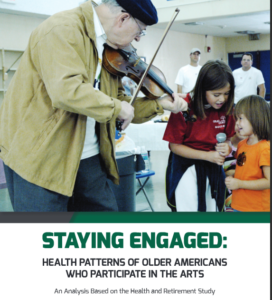 In a new report, Staying Engaged: Health Patterns of Older Americans Who Engage in the Arts, the National Endowment for the Arts (NEA) considers data illustrating the arts participation rates of adults aged 55 and older as well as their attitudes about the arts and related health characteristics. The report is based on the results of the 2014 Health and Retirement Study, which was conducted by the University of Michigan with support from the National Institute on Aging and the Social Security Administration. The 2014 edition of this biennial study, which has been collecting longitudinal data since 1992, included for the first time a set of questions about arts and culture engagement. The questions enabled researchers to conclude that older adults who create art and attend arts events report lower rates of hypertension, fewer physical limitations and much higher cognitive-functioning scores than older adults who do neither.
In a new report, Staying Engaged: Health Patterns of Older Americans Who Engage in the Arts, the National Endowment for the Arts (NEA) considers data illustrating the arts participation rates of adults aged 55 and older as well as their attitudes about the arts and related health characteristics. The report is based on the results of the 2014 Health and Retirement Study, which was conducted by the University of Michigan with support from the National Institute on Aging and the Social Security Administration. The 2014 edition of this biennial study, which has been collecting longitudinal data since 1992, included for the first time a set of questions about arts and culture engagement. The questions enabled researchers to conclude that older adults who create art and attend arts events report lower rates of hypertension, fewer physical limitations and much higher cognitive-functioning scores than older adults who do neither.
Analyzing the Work of NEA Folk and Traditional Arts Partnership Grantees
Qualitative Analysis Project Findings: Folk and Traditional Arts Partnership Grants is a new report from the NEA summarizing a research effort to learn more about the nature of the projects and programs it supported through its eponymous grant program in 2013, 2014 and 2015. The paper considers the objectives, activities and intended outcomes described by 115 grantees (28 nonprofit arts organizations and 87 state and regional arts agencies). Drawing on in-depth qualitative analysis of the grantees’ applications and final narrative reports, it also proposes a theory of change that describes their work.
Transportation and Creative Placemaking: A Field Scan
A new paper commissioned by ArtPlace America and written by Transportation America, Arts, Culture and Transportation: A Creative Placemaking Field Scan, looks at how arts and culture can help policymakers in the transportation sector address their key priorities. It focuses primarily on arts projects undertaken in response to a specific transportation challenge and realized in partnership with transportation professionals. The paper is the result of one of several field scans ArtPlace America has commissioned as part of its effort to explore how arts and cultural practitioners can support community planning and development efforts, which generally are undertaken in nine non-arts sectors: agriculture and food, economic development, education and youth, environment and energy, housing, immigration, public safety, transportation, and work-force development.
How Distance Affects Arts Participation
In At What Cost? How Distance Influences Arts Attendance, the National Center for Arts Research (NCAR) at Southern Methodist University considers how location, time and money affect people’s decisions about whether or not to participate in an arts event. The report concludes that the arts “are radically local” and that people are “much less likely to go” to an arts event if it is not in their neighborhood. In addition, time demands also affect arts attendance. For example, people with a long daily commute are 60% less likely to travel 30 kilometers or more for an arts experience than those with a shorter trip to work. The lack of nearby arts venues, however, compensates somewhat for the downside of distance. In addition, people with higher levels of income and education are more willing to travel for the arts than those with lower levels.
Culture Track Survey 2017
 The latest research from LaPlaca Cohen on the evolving behaviors of cultural consumers and audiences is now available for free download. Cultural Track 2017 is the latest edition of the Culture Track survey series, which began in 2001. The 2017 iteration included updated questions and yielded a larger pool of respondents than previous versions. Its summary report features an interactive presentation of findings, which focus in part on the value of technology in arts experiences, philanthropic trends, and audience needs, desires and loyalty. While the survey’s scope is limited, the results indicate that definitions of culture and cultural experiences have changed in recent years. In addition, the report concludes that “diversity means representation,” as people of color are 82% more likely to stay away from arts experiences that don’t reflect a range of cultural backgrounds.
The latest research from LaPlaca Cohen on the evolving behaviors of cultural consumers and audiences is now available for free download. Cultural Track 2017 is the latest edition of the Culture Track survey series, which began in 2001. The 2017 iteration included updated questions and yielded a larger pool of respondents than previous versions. Its summary report features an interactive presentation of findings, which focus in part on the value of technology in arts experiences, philanthropic trends, and audience needs, desires and loyalty. While the survey’s scope is limited, the results indicate that definitions of culture and cultural experiences have changed in recent years. In addition, the report concludes that “diversity means representation,” as people of color are 82% more likely to stay away from arts experiences that don’t reflect a range of cultural backgrounds.
Ken Skrzesz Joins Maryland State Arts Council as ED
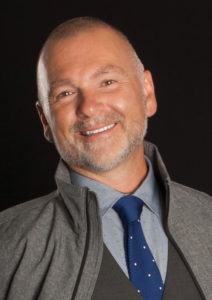 Ken Skrzesz began his role as executive director of the Maryland State Arts Council in October. A certified dance and theatre instructor for grades 6 through 12 in Maryland, Skrzesz has designed and implemented arts education and professional development programs with a special emphasis on underserved populations. Skrzesz most recently worked as an educational program supervisor and coordinator of fine arts for the Maryland State Department of Education. He previously served as the executive director of Clear Space Theatre Company in Rehoboth, Delaware, for eight years. He has a bachelor’s degree of fine arts in dance from Towson University and a master of fine arts degree in dance from the University of North Carolina, Greensboro.
Ken Skrzesz began his role as executive director of the Maryland State Arts Council in October. A certified dance and theatre instructor for grades 6 through 12 in Maryland, Skrzesz has designed and implemented arts education and professional development programs with a special emphasis on underserved populations. Skrzesz most recently worked as an educational program supervisor and coordinator of fine arts for the Maryland State Department of Education. He previously served as the executive director of Clear Space Theatre Company in Rehoboth, Delaware, for eight years. He has a bachelor’s degree of fine arts in dance from Towson University and a master of fine arts degree in dance from the University of North Carolina, Greensboro.
Chris Cathers Is Acting Executive Director in Kentucky
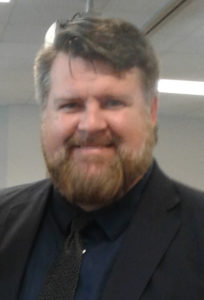
Chris Cathers was appointed acting executive director of the Kentucky Arts Council in September. He has been with the arts council for 10 years. As program branch manager, Cathers managed community based initiatives, developed the Kentucky Certified Cultural District program and produced Kentucky Crafted: The Market. Additionally, his duties include research, development and implementation of processes, programs and initiatives to promote community building through the arts, integrating and promoting cultural heritage tourism, and marketing of the arts. Prior to joining the Arts Council, Cathers spent three years at Eastern Kentucky University as program manager of the Kentucky Artisan Heritage Trails program, a nationally recognized cultural heritage tourism project in the Appalachian region of Kentucky. Under his direction, the program garnered numerous awards including the Kentucky Earth Day Award, Center for Information Technology Enterprise’s Best Practices in the KY120, and the University Economic Development Association’s Award of Excellence in Community Development. He also helped to develop the first geotourism map of Appalachia in partnership with the National Geographic Society. Cathers’s background includes Internet marketing, sales, retail management, and college instruction. He holds an M.B.A. in business management from Morehead State University.
In this Issue
From the President and CEO
State to State
- Mississippi: Mississippi History through the Arts Curriculum
- North Carolina: Arts Across NC Podcast
- Massachusetts: EBT Card to Culture
Legislative Update
Announcements and Resources
More Notes from NASAA
Research on Demand
SubscribeSubscribe
×
To receive information regarding updates to our newslettter. Please fill out the form below.
